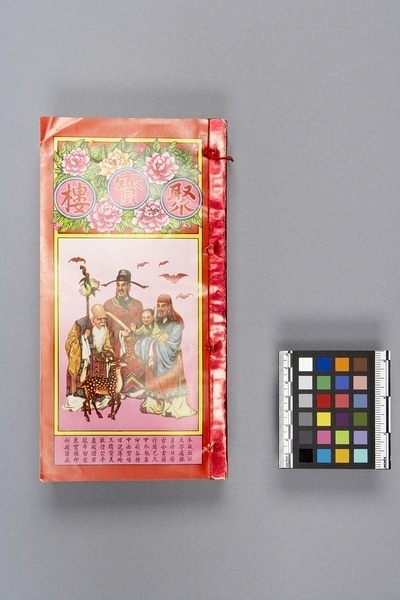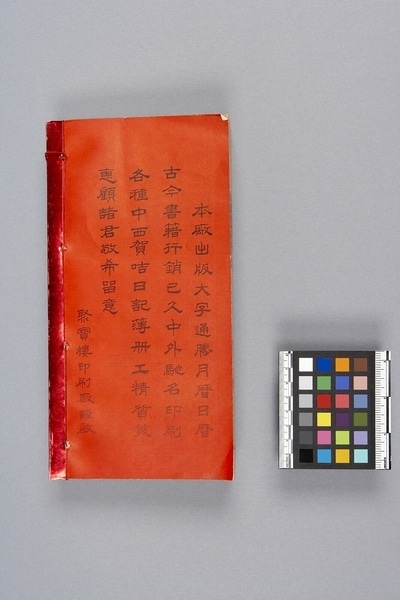Almanac Book Item Number: Edz1126 from the MOA: University of British Columbia



Description
Book with image on front of four pink flowers and one yellow flower with Chinese characters inside three pink circles, four figures with red bats over their heads, and four rows of black Chinese characters inside a pink rectangle. The back cover is red with black Chinese characters, and the spine is metallic green and gold with red and gold Chinese characters bordered with metallic red on either side. The book is bound with red fibre string, and the pages of the book are beige paper with text and images printed in black ink.
History Of Use
Chinese people who practice popular religion rely on almanacs for making important decisions, as well as for determining in detail the seasons of the year and when particular activities should take place. They consult almanacs for choosing good and bad days for performing important activities, such as building a new stove or starting school. An almanac may also help with a problem, such as finding a reason for a child’s intractable illness. Using an almanac requires literacy, and not all literate people can interpret them. When faced with this problem, people may consult a man who owns a shop where ritual goods are sold, and who will have the necessary knowledge to suggest a remedy, such as what god to worship. Reliance on almanacs is now much less common than it was in the past, due to western influence and the availability of effective medical care.
Iconographic Meaning
The colours on this almanac are auspicious, and the bats are symbols of good fortune.
Narrative
From a ritual goods shop in Tsuen Wan, Hong Kong. Kwok Fung, Yin-ha, of Tsuen Wan, Hong Kong, gave invaluable help to Elizabeth Johnson in the selection and purchase of these offering materials, a complete set of those needed by a household, and in explaining their meaning and how they were used.
Item History
- Made in Tsuen Wan, Hong Kong, China during 1979
- Collected by Elizabeth L. Johnson during 1979
- Owned by Elizabeth L. Johnson before March 17, 1980
- Received from Elizabeth L. Johnson (Seller) and Museum of Anthropology Shop Volunteers (Funding source) on March 17, 1980
What
Who
- Culture
- Chinese
- Field Collector
- Elizabeth L. Johnson
- Previous Owner
- Elizabeth L. Johnson
- Received from
- Elizabeth L. Johnson (Seller) and Museum of Anthropology Shop Volunteers (Funding source)
Where
- Holding Institution
- MOA: University of British Columbia
- Made in
- Tsuen Wan, Hong Kong, China
When
- Creation Date
- during 1979
- Collection Date
- during 1979
- Ownership Date
- before March 17, 1980
- Acquisition Date
- on March 17, 1980
Other
- Item Classes
- works on paper
- Condition
- good
- Accession Number
- 0610/0096